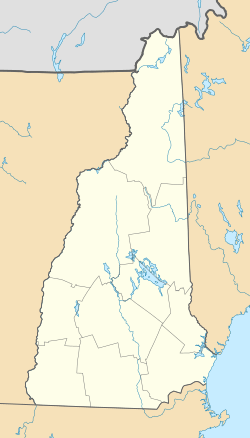Hampton Falls River facts for kids
Quick facts for kids Hampton Falls River |
|
|---|---|
| Country | United States |
| State | New Hampshire |
| County | Rockingham |
| Towns | Kensington, Seabrook, Hampton Falls |
| Physical characteristics | |
| Main source | Kensington 110 ft (34 m) 42°54′13″N 70°55′41″W / 42.90361°N 70.92806°W |
| River mouth | Hampton River Hampton Falls 0 ft (0 m) 42°54′47″N 70°50′44″W / 42.91306°N 70.84556°W |
| Length | 5.6 mi (9.0 km) |
| Basin features | |
| Tributaries |
|
The Hampton Falls River is a cool river in southeastern New Hampshire, United States. It's about 5.6 miles (9.0 km) long. The river's lower part is tidal. This means the ocean's tides affect its water level. It flows through a special area called the Hampton salt marsh. This marsh is very close to the Atlantic Ocean.
Contents
Where Does the River Start?
The Hampton Falls River begins in the southeast part of Kensington. It starts at an elevation of about 110 feet (34 meters). From there, it flows east towards Seabrook.
The River's Journey
The river mostly follows the border between Seabrook and Hampton Falls. It even crosses this border three times! As it travels, it heads northeast into Hampton Falls.
Dodge Ponds and the Falls
Near the center of Hampton Falls, the river flows through three connected ponds called the Dodge Ponds. Before entering the last pond, the water drops about 10 feet (3 meters). This drop is known as the "Hampton Falls."
Reaching the Ocean
After passing under U.S. Route 1, the river enters the Hampton salt marsh. A salt marsh is a coastal wetland that is flooded by ocean tides. It's a unique ecosystem. The Hampton Falls River finally joins the Hampton River in this marsh.
What is a Tidal River?
A tidal river is a river where the water level and flow are affected by the ocean's tides. When the tide comes in, water from the ocean pushes up the river. When the tide goes out, the river's water flows back towards the ocean. This creates a mix of fresh and saltwater, making it a special habitat.



